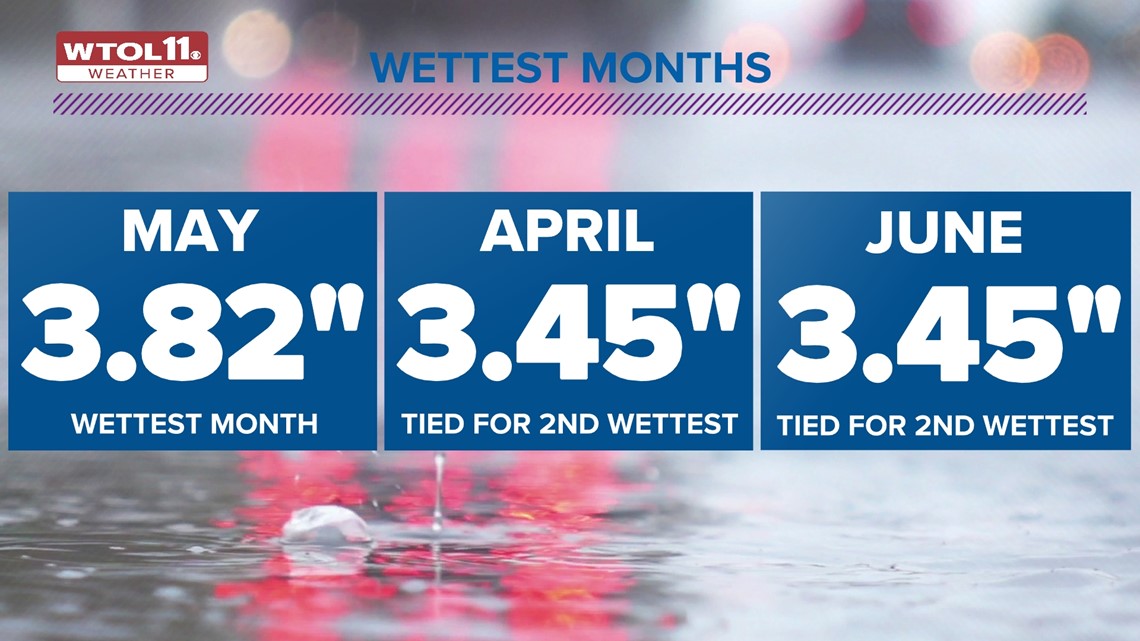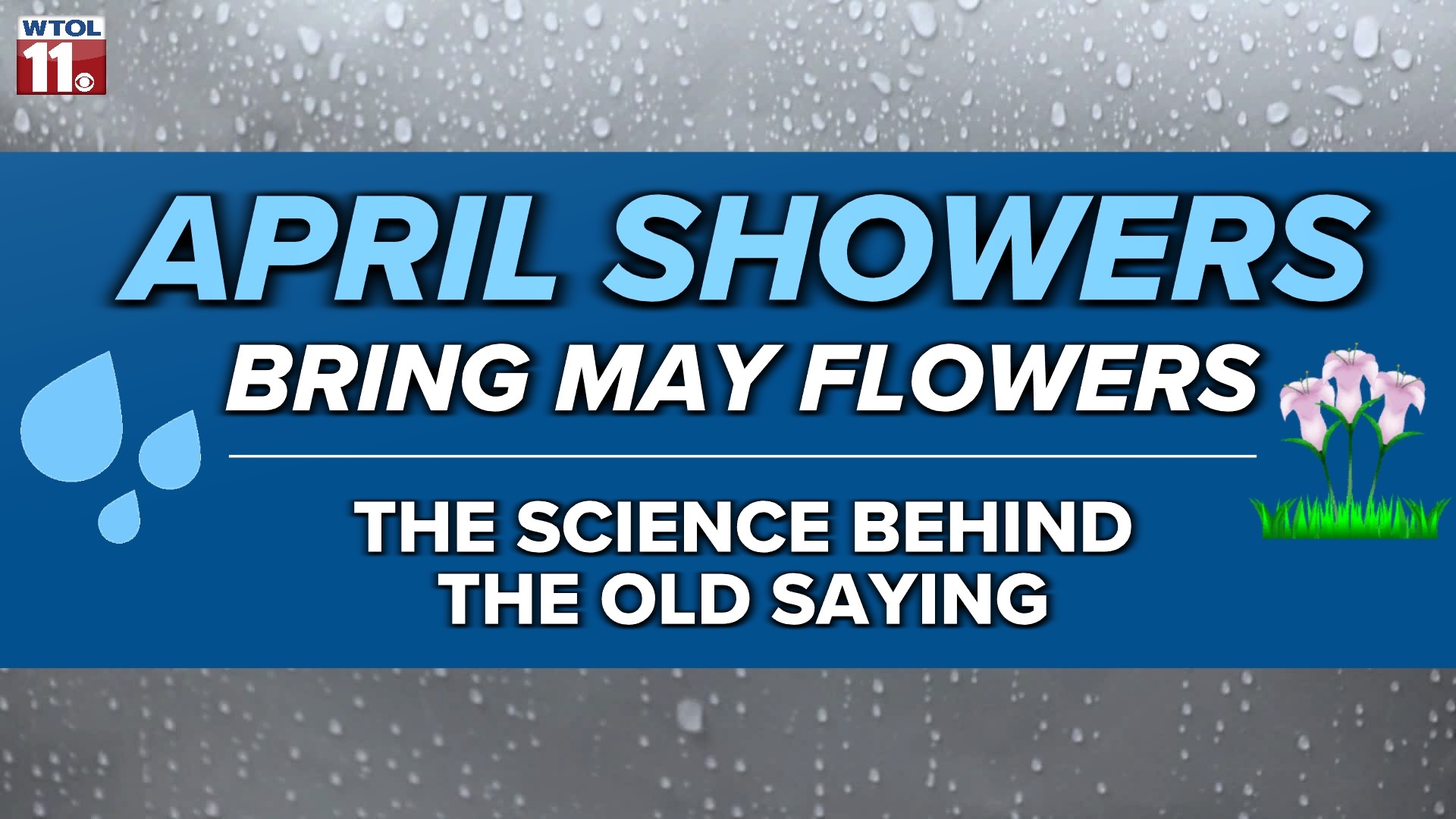TOLEDO, Ohio — Have you heard the saying "April showers bring May flowers?"
This old adage dates back to the late 1500s, but does it contain any scientific validity? In this week's edition of Climate Friday, we'll break down the science behind the saying and look ahead to the month of May.
English poet Thomas Tusser is often credited with coining the phrase "April showers bring May flowers." During the spring season, Tusser experienced a vast array of weather extremes in the United Kingdom.
His original poem "Sweet April showers do bring May flowers" dates back to the end of the 16th century. Not inherently rooted in science, the phrase was designed to give Brits optimism for brighter days with colorful flowers in May.


A May bloom is typical of cooler climates in the upper mid-latitudes like England, and Tusser observed the yearly floral display after a rainy April. But does the phrase ring true for all places?
Not necessarily. While April showers are required for spring flowers, temperature plays an even bigger role in the bloom. Warmer climates experience a significantly earlier bloom and cooler areas see a much later one.
For example, locations in the southeastern United States can see the spring bloom in April or even March. Further north, areas like Ohio and Michigan don't usually see spring flowers until late April or early May.
Tusser likely experienced an even later spring bloom due to the cooler climate of England. Bottom line: the spring bloom is highly dependent on temperature variation, and some perennials can come out in April or even March.
While this old English adage mentions a May bloom, the science suggests that an earlier bloom is more common, especially in an era of climate change.
Climate change has made the spring bloom much earlier on average. The main reason? Warmer temperatures are the natural cue for flowers to enter bloom, and the significant warming trend has shifted the spring bloom much earlier.


American naturalist Henry David Thoreau studied bloom dates in Massachusetts in the mid-1800s. Overall, the flowers he analyzed bloom much earlier now than they did nearly two centuries ago.
A scientific study published in 2010 compared bloom dates of various plants native to the eastern United States, assessing the change in spring bloom from Thoreau's era to the modern day. Overall, the spring bloom has shifted several weeks to even a couple months sooner due in part to climate change.
For example, in 1852 Thoreau observed a mid-May flowering date of the highbush blueberry. When the 2010 study was published, the bloom had shifted to April 1.
This vast change in spring bloom has resulted largely from climate change. Warming temperatures will likely contribute to an even earlier spring bloom in the coming years.
So what about the "April showers" part of the old saying? While temperature plays the biggest role in the spring bloom, precipitation trends can also factor in. April, May and June bring the wettest weather of the year for Toledo and most of northwest Ohio and southeast Michigan.
On average, the month of April brings 3.45 inches of rainfall, tied with June for the second-wettest month of the year. May takes the top spot, delivering a sizeable 3.82 inches of rainfall in a typical year.
This April has featured an overall drier pattern with less than an inch of rain at the time this video was recorded. If you're reading this on Friday, you're likely seeing rain out the window as our next storm system rolls in.
Even with this Friday rainfall, our monthly total will end up far below-average. With spring planting right around the corner, April precipitation makes a big difference for area farmers and gardeners.
If anything, too little rain is preferable to too much. Excess rainfall can saturate the soil and increase the risk of disease in plants. Saturated ground also makes spring planting more difficult.
Dry spring weather is generally preferable, but some rainfall is necessary, of course. Even with a drier than normal April, May showers and thunderstorms will likely grow more commonplace with an active weather pattern in the WTOL 11 10-day forecast.
To sum all of this up, yes, the phrase "April showers bring May flowers" has a slim degree of scientific validity even though it isn't inherently rooted in the evidence.
With more rain on the horizon, stay tuned to the WTOL 11 weather forecast as we round the corner from April into May.
RELATED VIDEO

